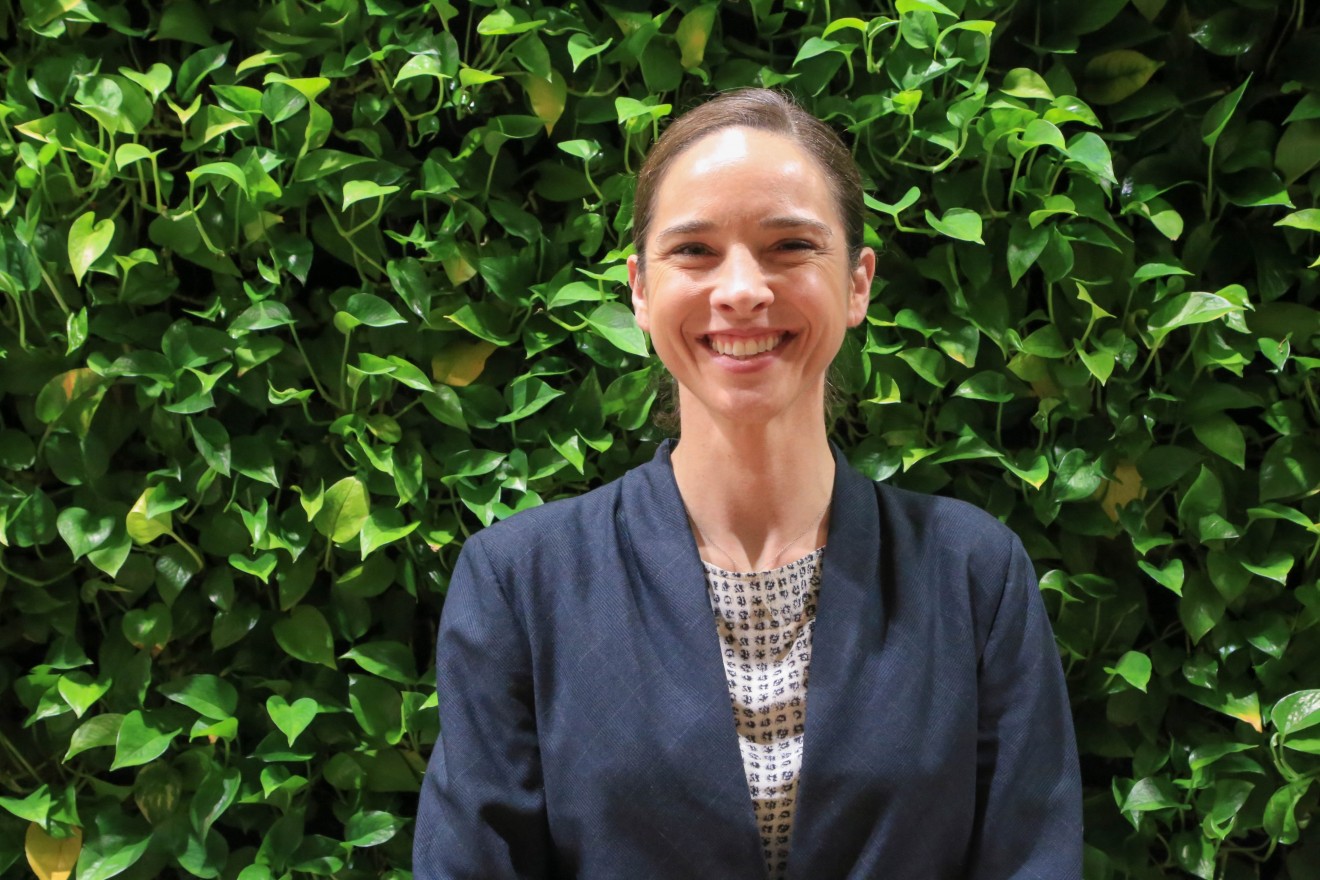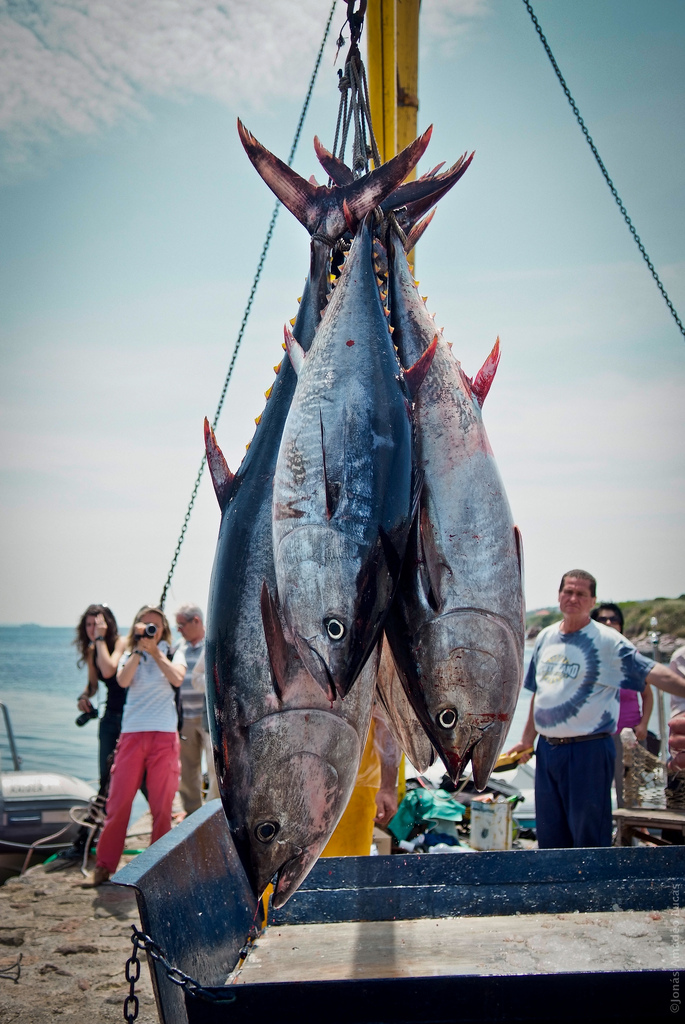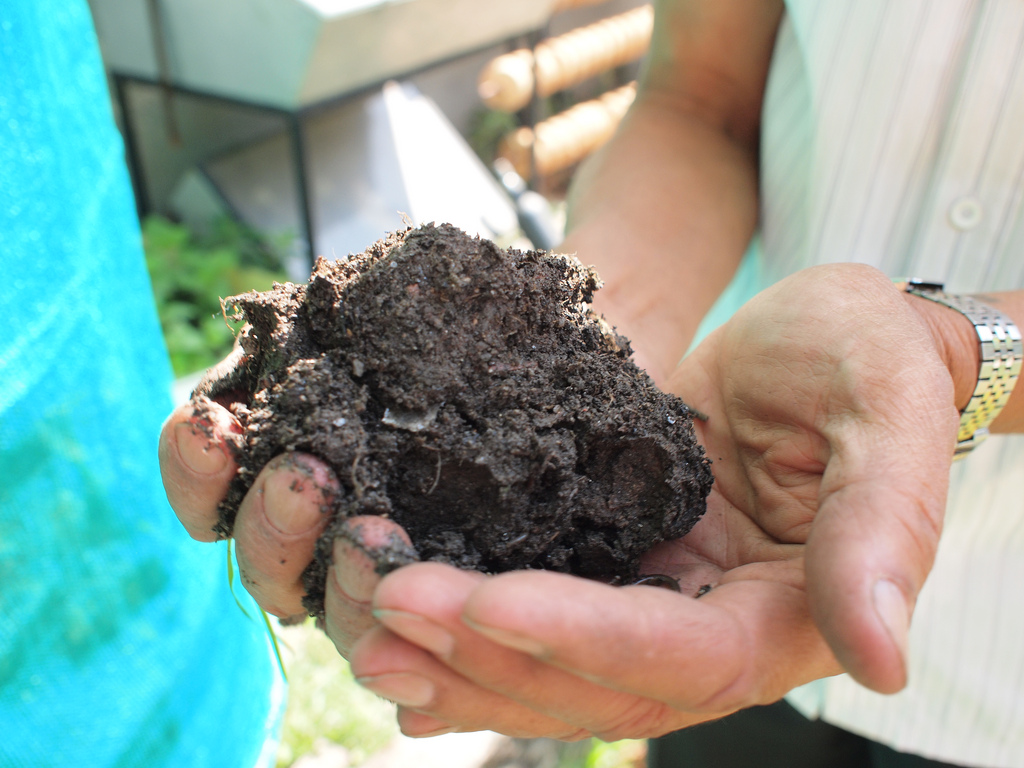
Katharine Mach. (Laura Whaling/Planet Forward)

Katharine Mach. (Laura Whaling/Planet Forward)
George Washington University recently hosted a daylong workshop for NGOs on carbon dioxide removal and negative emissions. We tagged along to learn more about negative emissions technology, environmental assessment, and climate change response options. One of the experts presenting at the event, Stanford University senior research scientist Katherine Mach, sat down with us to tell us more about herself and the technology. Here’s what she had to say:
Planet Forward: How did you come to pursue a career in climate change assessment?
Katharine Mach: My research background when I was a graduate student was focused on the oceans. I was looking at the way crashing waves shape what grows in the ecosystems right along the edge of the water. It was very challenging and exciting work. Basically saying – what’s environmental risk in the world right now? How does that shift as the climate warms and extreme temperatures play out and waves potentially change in terms of when they are crashing? However, what I didn’t like about that was some of the biggest issues regarding the ocean were acidification, overfishing, pollution, and climate change – and these were all left out. So, when I went for my Ph.D. I did something a little bit wild and I jumped to the IPPC, not really knowing what it was going to be like as a postdoctoral research associate. It was incredible, I was working with experts from around the world – physicists, moral philosophers, people looking at food security – every continent, every discipline, coming together trying to figure out what’s the state of knowledge of all aspects of the climate challenge and how can you make that knowledge relevant in real time to societies in the decision-making processes. I was fascinated by assessment; I really liked how it was a full state of knowledge, what we know and what we don’t and how that requires a lot of interactions among people to figure out what are the strengths and weaknesses of different lines of evidence. From there I shifted my focus to figuring out how to do assessment well.

PF: What are some economic risks, that you’ve seen through your assessments, that will be a result of the effects of global warming?
Mach: One easy entry point for thinking about damages in a changing climate are the economic losses associated with extreme events. Increasingly we can look event by event, whether it’s a heatwave, heavy rain event, or even complex things like fires and cyclones and understand the ways in which our emissions of heat trapping gases are driving up the risks. These types of events carry with them huge financial price tags. In the U.S. last year, there were 15 events that caused each a billion dollars in losses. This year, the total damages from all of the events we’ve seen unfolding are going to be vast. So, we can add those up event by event [and determine] how much more likely were those types of occurrences due to climate change? There’s increasing work in understanding what climate change means for economic impacts overall. It’s an exciting area of science, in that some of that work hadn’t really been massively updated since the 1990’s and so now it is. What we see is there are countries in the world right now that are ‘cold countries.’ If they get warmer, their economies might actually improve, such as in Norway. There are other countries that are already so hot that further warming will drive their economies down, which is the case for many of the countries in the tropics, which are also some of the poorest countries presently.
PF: Do you find it difficult in your studies to assess the economic risks of loss to biodiversity? How do you determine the value of a species in economic terms?
Mach: So one thing that we often say in the space of assessment is that there’s no one way to assess the risks in a changing climate. That essentially means that there are impacts for you and I in our current world and then there are impacts that our children and grandchildren might have many years into the future. How we prioritize those impacts, based on our current experience, there is no right answer for how that unfolds. The same thing goes for people in the world presently: we’ve got the rich and the poor simplistically cut; different people will put different priorities on outcomes across that socio-economic spectrum. The same goes for nature. Some might argue that nature should have value that is intrinsic to life while others will say the value of nature should be tied to the services directly applied to people. There is no one right answer in that space.
PF: Can you briefly describe the three different approaches to negative emissions and tell us which approach you think is most likely to be implemented on a mass scale?
Mach: So I think of the spectrum of carbon-dioxide removal as having two poles. On one pole we have biology and on the other we have engineering. I’m going to describe three [categories], one at the end of each of these poles and one that lies in the middle. The first [category] are approaches that are tightly linked to stewardship. So if we better manage our forests, they can hold more carbon. If we better manage our agricultural fields, the soils can take in more carbon. We know how to do these types of approaches and in some cases know how to do them really well. For example, California’s Forest Offset Program is the first legally enforceable program in forest offsets. It’s happening at 5 million tons per year at a relatively cheap cost of $10 a ton. The second [category] is still biologically based in terms of how carbon is taken out of the atmosphere but it’s more engineered. This could be anything from bio-char, to building with biomass, or bioenergy paired with carbon capture and storage (BECCS). These are approaches that are more expensive, not quite ready but could in many cases play an increasing role depending how in particular we decide to value the role of carbon in that equation. The third category [that includes] direct air capture, is a fully engineered approach. With this approach you are using carbon capture and storage to get carbon into geological formations underground. Looking across this spectrum of approaches, we have an order of magnitude differences in current cost: about $10, $100, $1000 per ton [respectively]. We are looking at different levels of engineering complexity, different spatial footprints for each approach. Direct air capture might make a whole lot of sense once we have abundant clean energy but until we have a lot of energy to put into the “capture” part of the equation it’s hard to imagine bringing it rapidly to scale. I see all of these [approaches] providing a lot of different opportunities for industries at the millions and to many millions tons scale. The real question moving forward is which ones, if any, can we get to the billion tons scale.

PF: How far out are we from developing these technologies and utilizing them? How many years of development do we need in order to utilize these technologies in a way that is fully beneficial?
Mach: For that first category we know how to do a lot of that now. Managing forests well, utilizing cover crops or compost additions in agricultural management are things that are available now. So the question is how do we create a financial signal – either through conservation or climate policy to make it a reality. In the BECCS space [second category] we see a number of plants at demonstration scale, about 1 million tons per year, we are starting to figure out how to make this happen. Some of our work at Stanford has tried to look at near-term, low cost, and commercially available opportunities in that space. For example, bio refineries that are working on a yearly basis to produce ethanol are a low cost option in capturing CO2. Direct air capture [third category], we are also starting to see prototype scale projects. For example there is a company now in Switzerland that is using direct air capture to filter CO2 into greenhouse agriculture as a way to get plants to grow faster. It’s hard to say exactly how long the [timeframe] is, recognizing for direct air capture you need a lot of energy to make it happen and across that spectrum you need some way to price carbon so we can make these policies translate into reality.
PF: While human ingenuity seems almost endless in this day and age, do you think it’s harmful for us to rely on technology alone to confront the challenges of global warming?
Mach: Responding to climate change is something that we as people, have never seen the likes of. On the one hand we need to transform our energy and land systems globally, at a rate and scale that we have never done proactively. Let’s say that we are phenomenally successful and we figure out abundant clean energy storage, grid integration, efficiency, pulling some CO2 out of the atmosphere, we grapple [the challenges of] land, and we meet the budget of limiting warming to under 2 degrees Celsius. Even if we are unbelievably successful in the realm of reducing our emissions of heat trapping gases, we still have more warming in the pipeline. It will very likely be twice as much warming as we’ve already seen to date. And that warming carries real risks that will be unfolding in every part of the world… no matter what aspect of risk you look at, it’s unfolding around the world and we will also have to prepare for those types of impacts.
PF: What are some policies that we could adopt today that would greatly reduce our risks of climate change?
Mach: I think the exciting thing is that there is a huge amount of momentum already in the climate change response space. That ranges from the fact that we are seeing increasing deployments of clean energy technologies around the world, we’re seeing very ambitious pledges towards electric vehicles, whether it be countries or companies and we’re seeing adaptation on every single continent. Here in the U.S. it is mostly states that are starting to figure out all sorts of different options. In terms of becoming more prepared for impacts or adaptation, one real challenge is what is happening in risk assessment and planning. We are just starting to actually implement actions and we are also just starting to really figure out: Once we’ve implemented actions, are they going to be effective? The most compelling options for policies in the near term are figuring out: how can we take some of this really ambitious progress so far and crank up “how fast, how much” and grapple with all of those barriers from finances, to making our legal system work, for something that is really different from how we’ve acted to date.
PF: My final question for you is: What do you think the biggest barrier is for the federal government of the United States from passing comprehensive climate change legislation?
Mach: In the U.S. we have had the climate narrative get swept up in a whole lot of ideology and fear. I think in some ways the best way to think about federal action moving forward in the U.S. is to recognize that we already see so much action at the city level, state level, and by the private-sector. Those are the enabling factors that at some point are going to make it easy for Congress to take action.